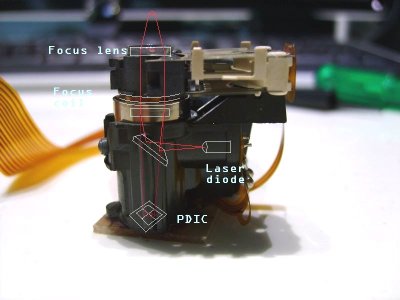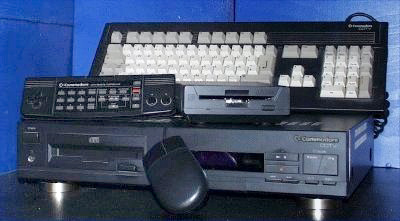The CD is 40 years old, and is it dead (does it?)

Philips Player Prototype, Elektuur Magazine No. 188, June 1979, Public domain mark 1.0
The CD is 40 years old, and for those of us who remember how it started, it remains a mysterious achievement of high technologies even now, when this carrier had to push back under the onslaught of streaming services.
If we aim to reveal the moment when digital data storage began to crowd out analog in consumer electronics, the appearance of CD can be considered as such. In the mid-seventies, the most desirable electronic "glands" were an analog video recorder and a CB radio station, but with the release of the first home computers and laser players, dreams aspiring to be "on the crest of a wave" suddenly changed. The CD player also turned out to be the first (in fact, the second after the LD player) household electronic device containing, although small, a real laser, which then seemed like something fantastic, well, just unreal. Today, new technologies, entering the market, do not produce such an effect: they are considered as something appearing and disappearing “in their turn”.
')
Where did he come from?
The “legs” of the format are growing from the latest video recording techniques of the time, which the developers also sought to adapt for high-quality sound recording. Sony tried to adapt the video recorder for digital sound recording, and in Philips - to record the sound in analog form on optical discs, similar to those that were already used for video storage. Then the engineers of both corporations came to the conclusion that it is better to record on an optical disc, but in digital form. Today, this “but” seems to be taken for granted, but then it was not immediately arrived. After the development of two incompatible but very similar formats, Sony and Philips began to work together, and by 1979 presented prototypes of a player and a 120-millimeter disc, which can accommodate more than an hour of 16-bit stereo sound with a sampling frequency of 44.1 kHz. In the popular science literature and periodicals, technology was attributed to an incredible futuristic, exaggerating its capabilities. TV shows promised that these discs would be “unkillable” compared to vinyl records, which further fueled interest in them. The top-loading Philips player with a sparkling silver case looked amazing, but the first models of these devices hit the shelves only in 1982.
How does he work?
Although it seemed to users that the principle of the CD player is overly complex and incomprehensible, in fact everything is surprisingly simple and understandable there. Especially in comparison with analog video recorders, next to which many of these players stood. By the end of the eighties, using a PCD device as an example, even a wide variety of topics were explained to future electronics engineers. Then, many already knew what the format was, but not everyone could afford to buy such a player.
The read head of a CD drive contains surprisingly few moving parts. The module, which includes both the source and the radiation receiver, is moved by a small electric motor through a worm gear. The IR laser shines in a prism, reflecting a beam at an angle of 90 °. The lens focuses it, and then, reflected from the disk, through the same lens gets back into the prism, but this time it does not change its direction and reaches an array of four photodiodes. The focusing mechanism consists of a magnet and windings. With proper tracking and focusing, the greatest intensity of radiation is achieved in the center of the array, violation of tracking causes displacement of the spot, and violation of focus - its expansion. The automation adjusts the position of the reading head, the focus and the number of revolutions, so that the output is an analog signal from which digital data can be extracted, which arrive at the required speed.

Reader head with explanations, CC BY-SA 3.0
Bits are combined into frames, to which EFM (eight-to-fourteen modulation) modulation is applied while recording, allowing to avoid single zeros and ones, for example, the sequence 00010001001000000100 turns into 111000011100000111. After skipping frames through the lookup table, a stream of 16-bit data is obtained, undergoing Reed-Solomon correction and entering the DAC. Although different manufacturers made various improvements to the system over the years of the format, the main part of the device remained a very simple opto-electronic node.
What happened to him then?
In the nineties, the format of a fantastic and prestigious turned into a massive. The players are much cheaper, portable models have entered the market. Disk players began to force out of cassette pockets. The same thing happened with CD-ROM, and in the second half of the nineties it was difficult to imagine a new PC without a CD-drive and multimedia encyclopedia in the kit. The Vist 1000HM is also no exception - a stylish computer with speakers integrated into the monitor, a VHF receiver and a compact IR keyboard with a built-in joystick that resembles a huge console from a music center. In general, with all his appearance he shouted that the place to him was not in the office, but in the living room, and he claimed the place occupied precisely by the music center. The disc of the group “Nautilus Pompilius” was attached to it with compositions in four-band monaural WAV-files, which took up little space. There was also a more specialized technique that uses CDs as data carriers, for example, Philips CD-i and Commodore Amiga CDTV, as well as Video CD players, a Sega Mega CD for Mega Drive / Genesis consoles, 3DO and Play Station (the very first) ...

Commodore Amiga CDTV, CC BY-SA 3.0

Computer Vist Black Jack II, looks no different from Vist 1000HM, itWeek, (163) 39`1998
And while following the rich, everyone else mastered it, the agenda was a new topic: the ability to burn CDs at home. Fantastic smacked again. Few happy owners of writing drives have tried to pay for them by putting up ads: “I'll make a backup of your hard disk on a CD, inexpensively.” This coincided with the advent of compressed MP3 audio format, the first MPMan and Diamond Rio players were released. But at that time they used expensive flash memory, but the Lenoxx MP-786 compact disc became a real hit - and he read both custom and ready-made discs with MP3 files. Napster and similar resources soon fell victim to record companies, which, nevertheless, were simultaneously eyeing the new format. One of the first licensed MP3-disc released a group of "Crematorium", and most often it was listened to on this player. And the translator even once had a chance to climb inside one of these players and eliminate the defect that causes the disc to touch the cover. The release of Apple's first iPods, which allow buying albums through a convenient interface on a computer screen, prompted music publishers to finally move from combating compressed audio formats to extracting commercial gain from them. Then, the smartphone almost took the separate MP3 players out of use even faster than they had previously pressed the CD. Lasers in modern consumer electronics are either absent or idle most of the time, but vinyl and cassettes are now being revived. Is the CD dead? Probably not, because the production of both drives and carriers has not been completely discontinued. And it is possible that a new wave of nostalgia will revive this format.
Source: https://habr.com/ru/post/444598/
All Articles